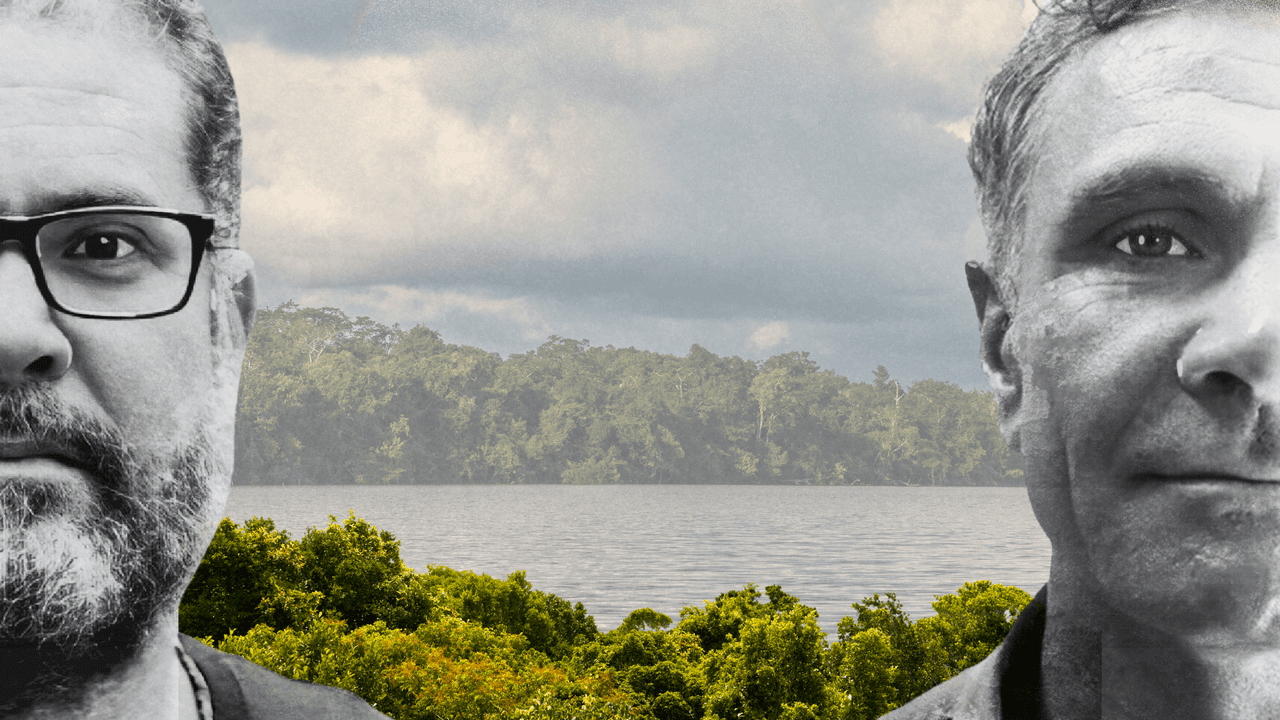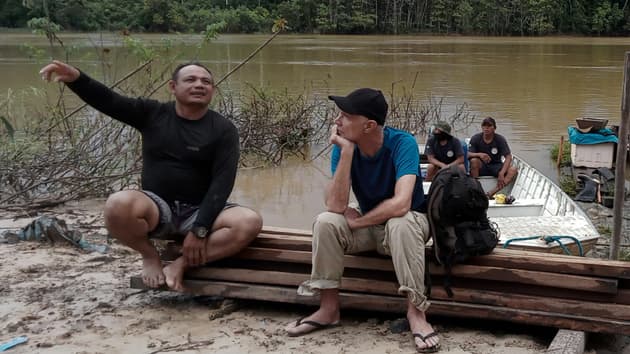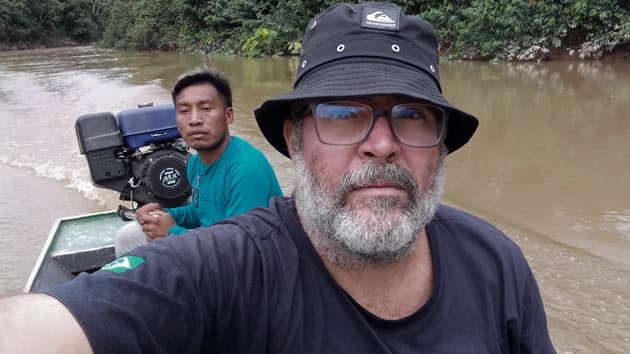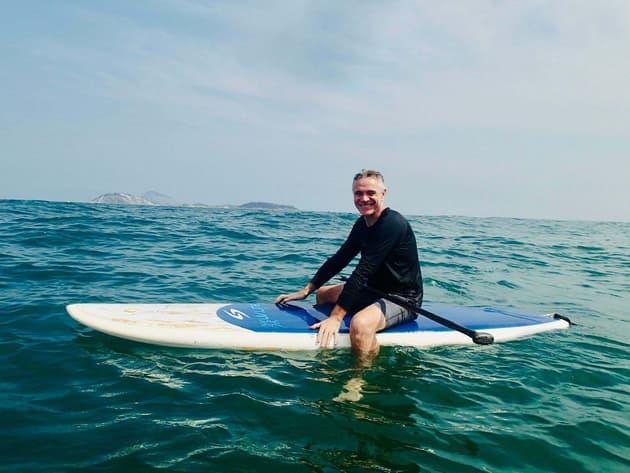
Bruno and Dom’s lives were ended. But the work goes on
It’s the everyday snapshots of Dom and Bruno that hit you first. They don’t know what’s coming. One photo shows Dom sitting on the banks of the Itaquaí river, not long before he and his colleague would be tracked down and brutally killed. Another is what appears to be the final selfie taken by Bruno as he makes his way down the river in a boat, wearing a battered bucket hat.
The photos were recovered from Bruno’s phone, which was found in the mud by forest defenders months after its owner had been killed (it has since been handed over to the police).
Vale dos Isolados (The Isolated Valley) is director Sônia Bridi’s grim but fascinating documentary for TV Globo. It shows how the Vigilância Indígena search teams found personal items belonging to Bruno Pereira, a longtime protector of Brazil’s Indigenous people, and the British journalist Dom Phillips, as they attempted to piece together their final moments.
Watching the film as a journalist, the most disturbing moment comes when they find a card on the forest floor and scrape off the mud to reveal Dom’s NUJ press pass – it’s just like mine. Dom worked with TBIJ as well as the Washington Post and the Guardian; when he died, almost exactly a year ago today, he was researching a book titled How to Save the Amazon. (His family are fundraising to complete the book.)
Bruno’s determination to protect Brazil’s Indigenous people had earned him enemies among the illegal fishermen, miners and cocaine growers who encroach on the territory of Indigenous people such as the Marubo, Matis and Korubo.
His friend Dom was “a kind and generous soul”, remembers TBIJ’s Brazilian reporter Elisângela Mendonça. She first met him about seven years ago at a beach bar in Rio de Janeiro where foreign correspondents hung out. He was wearing shorts and flip-flops, and set up a WhatsApp group to enable journalists to help each other.
 Dom Phillips, photographed by Bruno a few days before they died
TVGLOBO
Dom Phillips, photographed by Bruno a few days before they died
TVGLOBO
 The last known image of Bruno Pereira
TVGLOBO
The last known image of Bruno Pereira
TVGLOBO
Dom began working with TBIJ in 2019, helping us investigate the devastation to the Amazon rainforest driven by the beef industry. He would take photos of catastrophic deforestation caused by cattle ranching, which we would then match to embargoed areas via satellite images and geo-location.
When a driver for the giant Brazilian beef giant JBS posted pictures of cattle being collected from a ranch where illegal deforestation had taken place, Dom helped us show how this was part of an endemic pattern. As much as half the cattle reared across the Amazon likely comes from potentially illegal farmland.
The TV Globo film is part of a collaboration run by Forbidden Stories to make sure that vital investigations like this one survive even if the journalist reporting them does not. More than a dozen organisations around the world have been following up Dom and Bruno’s work. TBIJ, along with Le Monde, the Guardian, Ojo Público, Repórter Brasil, OCCRP and Der Standard, to name a few, will be publishing investigations over the next several days as part of the Bruno and Dom Project.
 Dom was a kind and generous soul who freely helped out other journalists
Alberto Almendariz Personal Archive
Dom was a kind and generous soul who freely helped out other journalists
Alberto Almendariz Personal Archive
Three men are currently in custody while a judge prepares to rule on whether they will face trial by jury for the murders of Dom and Bruno. But the culture of impunity for crimes committed in the Amazon at the time they died came from the very top. For the four years that Jair Bolsonaro was president of Brazil, rainforest protections crumbled. Meanwhile, attacks on the press increased.
Now that Luiz Inácio Lula da Silva has replaced him there are signs of change on both fronts. Since January, Brazil has climbed 19 places in Reporters Without Borders’ Press Freedom index, and Lula has set up a Ministry of Indigenous People led by Sônia Guajajara, a key member of Brazil's rising Indigenous rights movement. Earlier this year Guajajara accompanied Dom's widow Alessandra Sampaio and Bruno's widow Beatriz Matos to visit the crime scene.
Beatriz has agreed to work with Guajajara to protect isolated peoples like those in the valley. The work goes on.
Header image: A composite of Bruno Pereira, left, and Dom Phillips, right, over the Amazon river and rainforest that was the backdrop to their lives' work
Written by: Meirion Jones, TBIJ Editor
Environment editor: Robert Soutar
Production: Frankie Goodway
Fact checker: Alex Hess
-
Area:
-
Subject:




